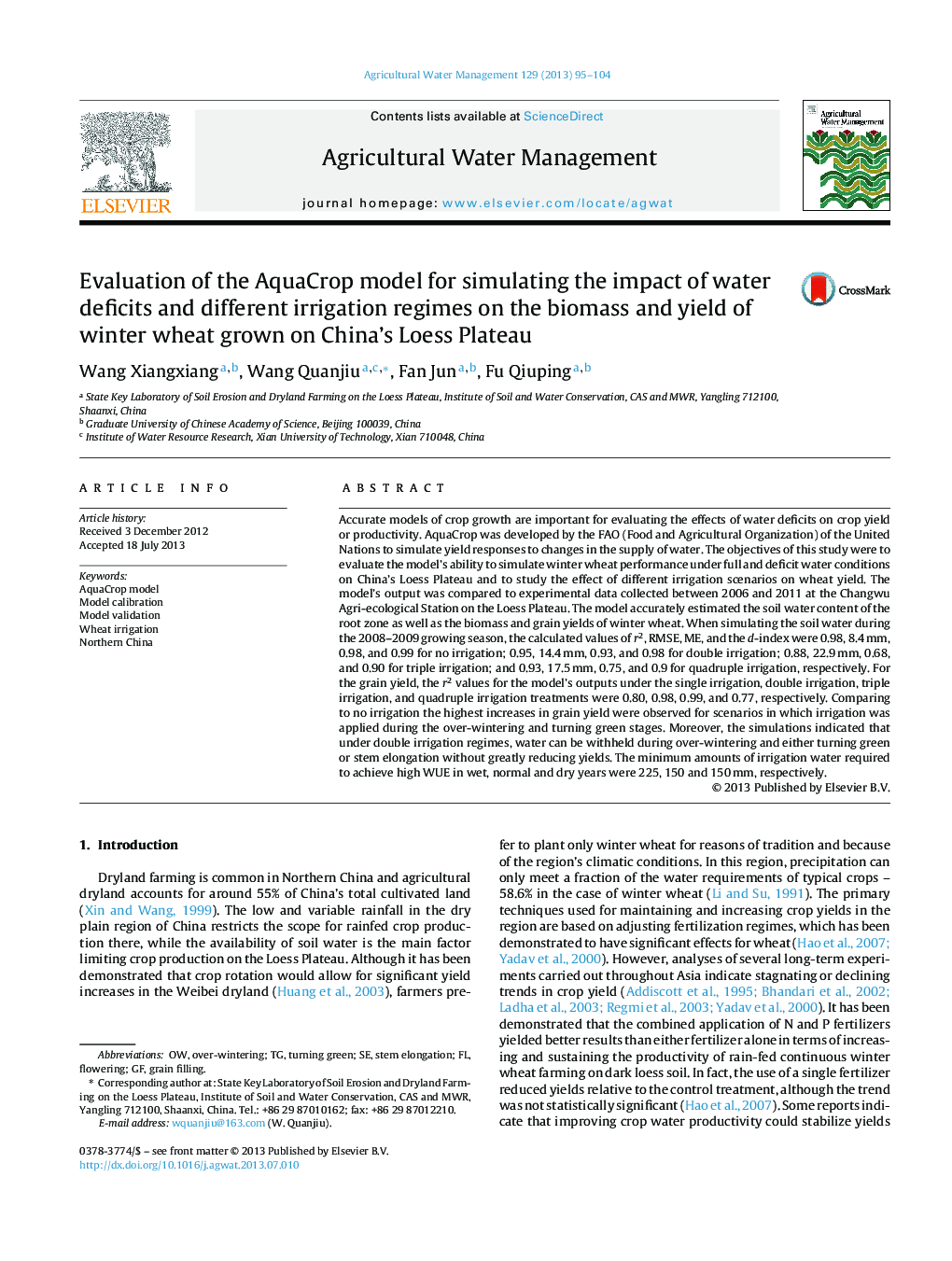| کد مقاله | کد نشریه | سال انتشار | مقاله انگلیسی | نسخه تمام متن |
|---|---|---|---|---|
| 6364043 | 1622950 | 2013 | 10 صفحه PDF | دانلود رایگان |
عنوان انگلیسی مقاله ISI
Evaluation of the AquaCrop model for simulating the impact of water deficits and different irrigation regimes on the biomass and yield of winter wheat grown on China's Loess Plateau
دانلود مقاله + سفارش ترجمه
دانلود مقاله ISI انگلیسی
رایگان برای ایرانیان
کلمات کلیدی
موضوعات مرتبط
علوم زیستی و بیوفناوری
علوم کشاورزی و بیولوژیک
علوم زراعت و اصلاح نباتات
پیش نمایش صفحه اول مقاله

چکیده انگلیسی
Accurate models of crop growth are important for evaluating the effects of water deficits on crop yield or productivity. AquaCrop was developed by the FAO (Food and Agricultural Organization) of the United Nations to simulate yield responses to changes in the supply of water. The objectives of this study were to evaluate the model's ability to simulate winter wheat performance under full and deficit water conditions on China's Loess Plateau and to study the effect of different irrigation scenarios on wheat yield. The model's output was compared to experimental data collected between 2006 and 2011 at the Changwu Agri-ecological Station on the Loess Plateau. The model accurately estimated the soil water content of the root zone as well as the biomass and grain yields of winter wheat. When simulating the soil water during the 2008-2009 growing season, the calculated values of r2, RMSE, ME, and the d-index were 0.98, 8.4Â mm, 0.98, and 0.99 for no irrigation; 0.95, 14.4Â mm, 0.93, and 0.98 for double irrigation; 0.88, 22.9Â mm, 0.68, and 0.90 for triple irrigation; and 0.93, 17.5Â mm, 0.75, and 0.9 for quadruple irrigation, respectively. For the grain yield, the r2 values for the model's outputs under the single irrigation, double irrigation, triple irrigation, and quadruple irrigation treatments were 0.80, 0.98, 0.99, and 0.77, respectively. Comparing to no irrigation the highest increases in grain yield were observed for scenarios in which irrigation was applied during the over-wintering and turning green stages. Moreover, the simulations indicated that under double irrigation regimes, water can be withheld during over-wintering and either turning green or stem elongation without greatly reducing yields. The minimum amounts of irrigation water required to achieve high WUE in wet, normal and dry years were 225, 150 and 150Â mm, respectively.
ناشر
Database: Elsevier - ScienceDirect (ساینس دایرکت)
Journal: Agricultural Water Management - Volume 129, November 2013, Pages 95-104
Journal: Agricultural Water Management - Volume 129, November 2013, Pages 95-104
نویسندگان
Wang Xiangxiang, Wang Quanjiu, Fan Jun, Fu Qiuping,